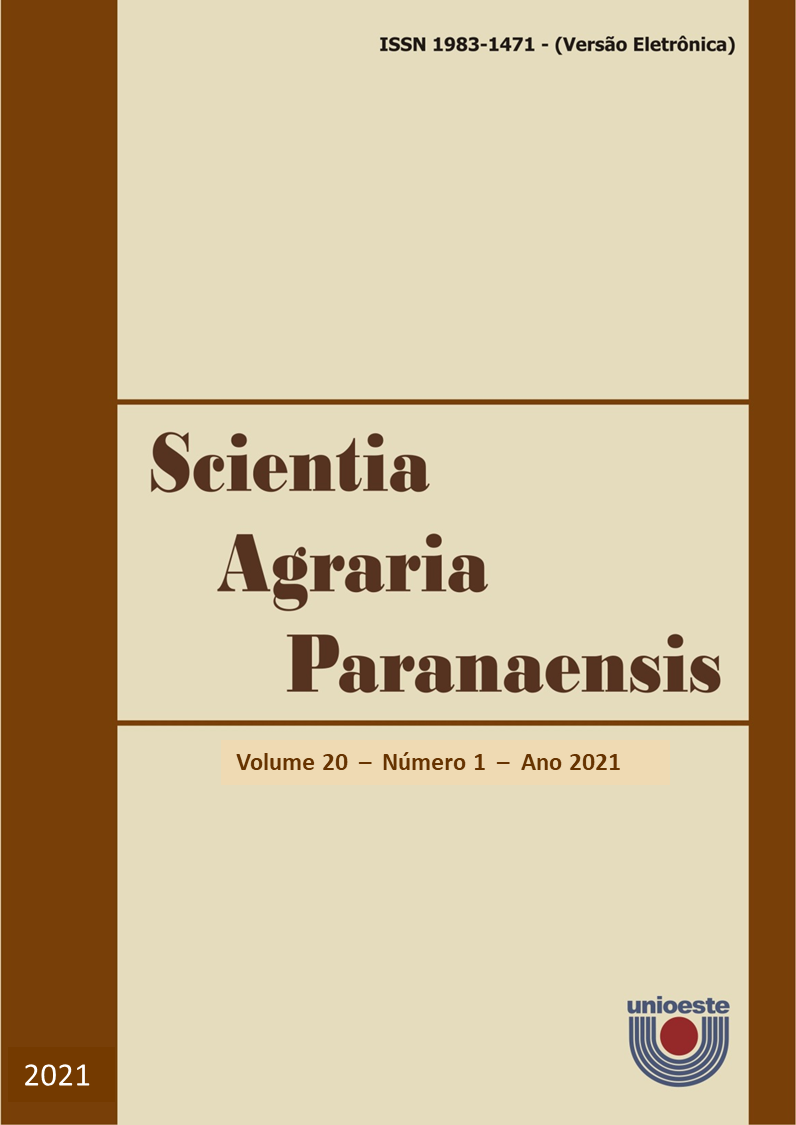Ploidia levels in pyrenic and apyrenic “pitangueira” accessions
DOI:
https://doi.org/10.18188/sap.v20i1.24998Resumo
Pitangueira (E. uniflora) is considered a diploid species with n = 11 and 2n = 22 chromosomes, in genotypes with the presence of seeds in the fruits. With the pitangueira production of apyrenic fruits existence, such behavior may be related to the ploidy level. The objective of this study was to determine the ploidy level of the pitangueira accessions producing fruit with and without seed, as well as to observe the meiotic behavior and possible chromosomal abnormalities. To check the ploidy level of the pitangueira, freshly expanded mature leaves were collected from the pyrenic pitangueira and from two pyrenic accessions, with suspensions of intact nuclei being prepared. Samples were analyzed in a flow cytometer equipped with multiple parameters data acquisition and UV laser. All analyses were performed using peak-height detection (>6000 fluorescent events, for example, nuclei, were analyzed per sample) and logarithmic amplification. The data were presented as histograms of the number of nuclei along the y-axis and the relative fluorescence intensity on the x-axis. The pyrenean pitangueira and other two pyrenic accessions were characterized as diploid.
Downloads
Publicado
Como Citar
Edição
Seção
Licença
Aviso de Direito Autoral Creative Commons
Política para Periódicos de Acesso Livre
Autores que publicam nesta revista concordam com os seguintes termos:
1. Autores mantém os direitos autorais e concedem à revista o direito de primeira publicação, com o trabalho simultaneamente licenciado sob a Licença Creative Commons Attribution que permite o compartilhamento do trabalho com reconhecimento da autoria e publicação inicial nesta revista.2. Autores têm autorização para assumir contratos adicionais separadamente, para distribuição não-exclusiva da versão do trabalho publicada nesta revista (ex.: publicar em repositório institucional ou como capítulo de livro), com reconhecimento de autoria e publicação inicial nesta revista.
3. Autores têm permissão e são estimulados a publicar e distribuir seu trabalho online (ex.: em repositórios institucionais ou na sua página pessoal) a qualquer ponto antes ou durante o processo editorial, já que isso pode gerar alterações produtivas, bem como aumentar o impacto e a citação do trabalho publicado (Veja O Efeito do Acesso Livre).
Licença Creative Commons
Esta obra está licenciada com uma Licença Creative Commons Atribuição-NãoComercial-CompartilhaIgual 4.0 Internacional, o que permite compartilhar, copiar, distribuir, exibir, reproduzir, a totalidade ou partes desde que não tenha objetivo comercial e sejam citados os autores e a fonte.


